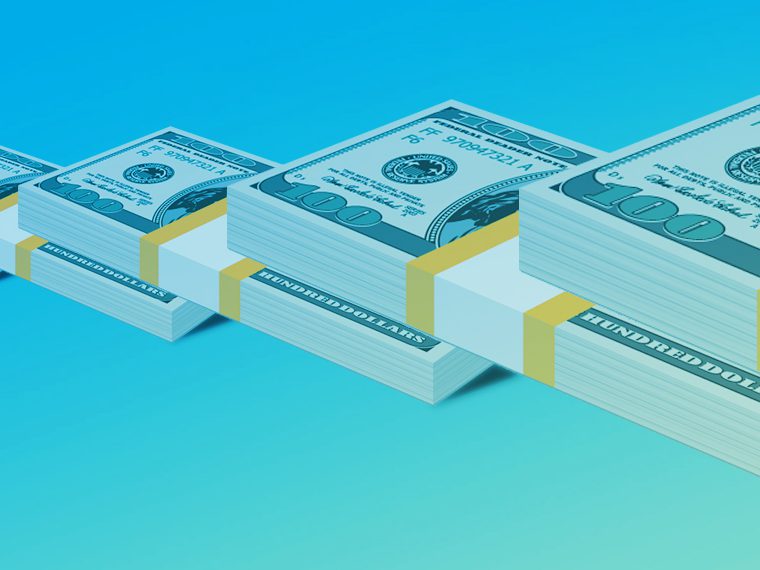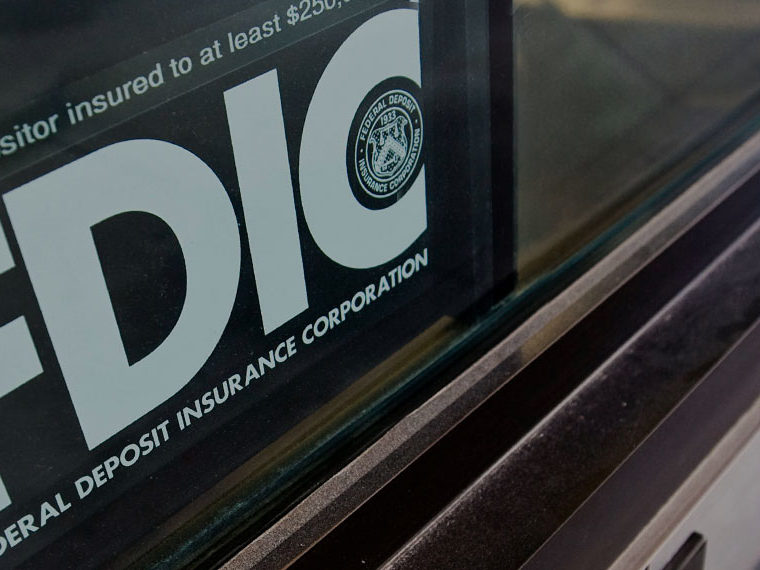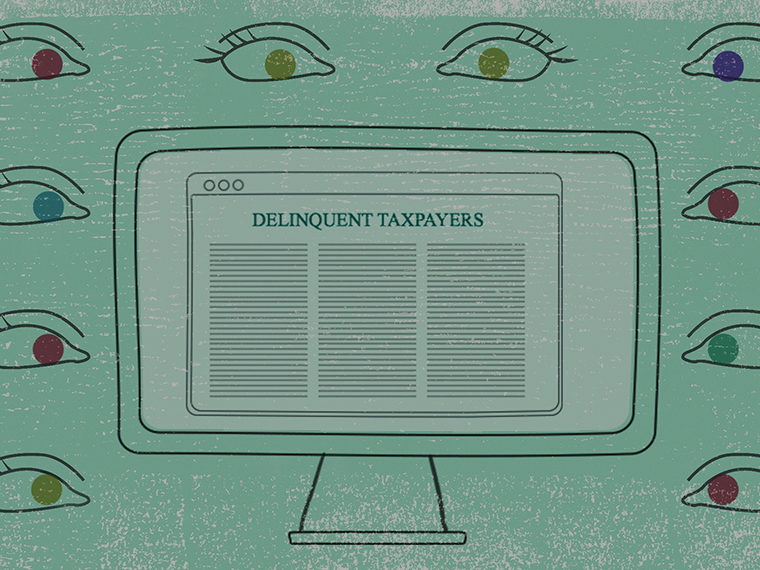Taxes not high enough? An examination of Washington’s experience even suggests state ownership of pot stores might boost the public coffers
For proponents of legalizing marijuana, a key selling point lies in the triple magic that a pot tax can play on crime, coffers and consumption. With the right level of taxation, legal weed sales grab money straight out of the black market, thwarting drug dealers by stealing away their customers. Unlike the bad guys, these newly legitimate businesses fork over cash to the state for every high they provide. Those funds provide billions of dollars for roads and schools and other public works projects that pot fans and haters alike appreciate. And higher prices that taxes create may discourage heavy usage.
While marijuana retailing is new to the U.S., decades of results from other sin taxes, and general theories of economics, guide the thinking. Overtaxing could cause customers to flee to cheaper suppliers, pushing profits to illegal dealers and to legal competitors in other states. Tax too little and, not only has the state shorted itself, it may have encouraged more consumption than intended.
No one is certain of the most effective tax structure for maximizing state marijuana revenues without sparking these unintended consequences. The legal industry is little studied at this point, and already academic researchers have come to some opposing conclusions. What’s more, the vast yet unquantified illegal market for pot exists alongside legal weed, and the movement of consumers — and even some movement of the supply — between those worlds is not well understood.

The six states with established recreational markets currently tax marijuana at rates ranging from about 10 percent to 37 percent, and several have changed their rates or structures recently. On November 6, 2018, Michigan voters legalized marijuana for anyone over 21 in a ballot initiative that included a 10 percent tax on retail sales. (Voters in North Dakota rejected a ballot measure that would have legalized pot there. Unlike legalization laws in other states, the ballot measure in North Dakota did not address regulation or taxation of the industry.) Local assessments often increase the tax rate on sales. Six years after Washington led the legalization trend, the “right” level of taxation for marijuana is still an ongoing debate.
Opt In to the Review Monthly Email Update.
In a working paper, UCLA Anderson’s Brett Hollenbeck and Yale’s Kosuke Uetake look for the sweet spot between too much and too little tax on recreational pot. Their findings suggest that around the country, states could pull more money from retail weed than their current tax structures allow.
The researchers analyzed every legal marijuana transaction over a three-year period in Washington, a state with by far the highest pot tax in the nation. They found that price fluctuations had little effect on dollar sales. When prices rose, Washington customers simply switched to a cheaper form of the product (from gummies to vaping oil, for example) while overall sales remained steady, the study finds.
Such loyalty, regardless of the cause, means that taxes could be higher without losing many customers, Hollenbeck posited in an interview. “We found lots of evidence that (Washington) could increase (the tax rate) more and get more revenue,” he said. “It’s not unreasonable to think these (pot products) could be taxed at, say, 70 percent.”
The researchers’ work implies that other states could significantly increase pot revenues by simply following Washington’s lead to a 37 percent tax rate. The authors calculated California’s potential revenue using a simple extrapolation of legal marijuana sales per resident. The state’s annual pot tax collections, they estimate, would shoot to about $1.68 billion from $813 million if it raised the tax rate to 37 percent from its current 15 percent (the figures imply some decline in legal sales). Reaching those numbers would require California to enforce rules against the black market.
Alternatively, Washington could dramatically increase pot revenues by turning all dispensaries into state-owned businesses, the study suggests. (Washington has deep experience with this type of monopoly, having exclusively owned all liquor stores in the state from the 1920s until privatization in 2012.) Washington pot businesses are highly profitable under the current tax structure, the study finds, and state ownership could put all of those profits into the state’s budget. (More on that below.)
The findings suggest that states “should not be too concerned” about running customers into the black market with higher taxes. “Our analysis suggests that people value the retail experience,” Hollenbeck argues. “It’s unlikely that people would shop around.”
The study adds to a small but growing body of research aimed at establishing how government’s role in this newly taxable sin market affects a state’s goals for the industry’s businesses and consumers, as well as its own budget.
A Tipping Point for Legal Weed?
Public support for recreational marijuana has grown quickly since Washington and Colorado became the first states to legalize it in 2013. As more states loosen their laws (nine states have fully legalized so far, and 22 states allow medical marijuana sales), residents in states without pot markets cross state lines to buy. When Oregon stores started selling weed legally in 2015, Washington pot dispensaries along the border saw sales drop immediately some 41 percent, according to a study by researchers at the University of Oregon.
The nonprofit (and pot agnostic) Tax Foundation, as well as industry research groups, contend that more states will fully legalize marijuana quickly now in order to keep those revenues at home. Canada legalized pot throughout the country in October, along with a tax structure to capitalize on it. Massachusetts recently began collecting taxes from recreational marijuana sales, and Maine is working toward licensing pot shops. Cannabis research firms Arcview Market Research and BDS Analytics estimate legal pot spending in the U.S. will reach $11 billion in 2018 and $23.4 billion by 2022. The Tax Foundation estimates that a mature marijuana industry would generate up to $28 billion in tax revenues for federal, state and local governments.
But the learning curve for maximizing revenue from marijuana has been steep. Colorado reduced to 15 percent its initial 29 percent tax because of a belief that high retail prices kept a lot of potential customers in the black market. Lower than expected sales when California dispensaries opened doors in January 2018 prompted serious debate about cutting its 15 percent tax. Early legalizers Alaska and Washington each revamped their original marijuana tax structures. There’s ongoing debate in every state, and little consensus nationwide, about the best level at which to tax pot.
Lush Profits in Weed
Selling pot legally in Washington is an enormously lucrative business, according to Hollenbeck and Uetake’s analysis. Despite the obligation to hand over for taxes more than twice the percentage of revenues required by any other state, the researchers calculate the average retail gross profit margin at about 54 percent.
By comparison, gross margins for auto supply and grocery stores average about 22 percent, according to a database kept by New York University finance professor Aswath Damodaran. Specialty retail edges up to about a 27 percent gross margin.
More than 10,000 people work in Washington’s marijuana industry, according to industry estimates. By the end of fiscal year 2017, some 1,335 licensed growers and processors were supplying the marijuana oils, extracts, chocolates, lollipops and every other legal THC-laced product in the state, according to the Washington State Liquor and Cannabis Board. Producers are allowed to grow weed — that is, growers and the people who form the plant into consumable products can combine operations — but retailers are not allowed to own any part of production and processing. The state caps retail licenses at 556.
Originally, Washington assessed a 25 percent tax on the grower’s sale to the producer; another 25 percent on producer to retailer transaction; and another 25 percent on the consumer at the stores. In 2015, the state simplified the tax structure with a single 37 percent tax at the point of retail sale. Retail sales in 2017 were about $927 million through 507 retailers, according to the board.
With data from the board, Hollenbeck and Uetake could see every legal marijuana transaction in the state, up and down the supply chain, between November 2014 and September 2017. The data include prices for the roughly 80 million transactions, allowing the researchers to draw conclusions about how pot retailers and consumers react to changes in costs.
Washington marijuana retailers bear very little of the state’s unusually large tax burden, the authors conclude. When costs rise, pot stores raise prices more than enough to cover the additional costs, the study finds. Consumers respond by switching to a cheaper legal product within the store rather than taking their business elsewhere, according to the data. As a result, sales fall little when prices rise, and sales rise little when prices fall, according to the study. It’s as if there’s a collective budget for legal pot, and the people of the state stick to it.
Based on the findings, Hollenbeck believes that most legal marijuana dispensary customers don’t view the black market as a viable substitute for their purchases. He notes that the cost pass-through rate for Washington marijuana is well above 1.0, meaning retailers use cost increases as opportunities to take an even bigger profit from consumers. “They wouldn’t be able to pass costs along like this if consumers had readily available substitutes on the black market,” Hollenbeck says.
In most industries, free market competition makes such advantageous pricing impossible. For example, several studies, including one published in the medical journal JAMA earlier this year, have found that retailers of sugary sodas do not pass on the entire cost of a new tax to customers, ostensibly because sales would drop.
Washington, like other states with legal marijuana, strictly limits the number of licenses it grants for marijuana dispensaries. Such regulation is intended to limit the number of pot shops on the street and make regulating the industry easier. The study suggests that there’s room for more competition than the 556 licensees the state allows.
How Much Can We Make on This?
Using data from actual price changes in the Washington market, Hollenbeck and Uetake estimated consumer response if the state hiked its pot tax above its current 37 percent. With a 40 percent tax, Washington would increase monthly tax revenue by 5.3 percent, according to their analysis, even though sales would decline by 1.2 percent. Raising the tax rate to 50 percent would increase tax revenue 7.1 percent, they find. (Washington collected $341 million in marijuana taxes last year on total retail sales of $927 million.)
The authors warn against forecasting sales beyond about a 40 percent tax rate, as results from hypothetical scenarios farther away from the short period of historical records are less reliable.
Washington could more than double its collections from marijuana sales by forcing all transactions to go through state-owned dispensaries, the authors found. A state monopoly with roughly the same price markups that current retailers set could, according to the study, collect about as much tax revenue as the state gets now, plus the profits retailers currently pocket.
Using a formula used by state-owned liquor stores in Pennsylvania and, formerly, in Washington, the authors also forecast returns in a state-owned monopoly that collected no tax, but set prices to include a 51.9 percent markup on wholesale prices. In that scenario, prices drop considerably (Hollenbeck notes that the state markup would be well below the roughly 140 percent markup by private dispensaries in the study) and total consumption increases substantially. The state’s bankable revenue increases by about 15 percent over last year’s collections, according to the study.
“Our results suggest that (state monopoly) might actually be a good idea,” Hollenbeck explains. “Normally, you don’t want that because lack of competition creates higher prices and limited choices for consumers. But consumers are already getting high prices and limited choices, because the states are limiting the number of (pot) retailers.” Levels of service, product innovation and other marvels that legal pot store customers now enjoy, of course, might not be so grand under state ownership, one suspects.
Other Research
Research on legal pot is far from reaching consensus. Hollenbeck and Uetake’s analysis follows a 2017 working paper out of University of Oregon that came to different conclusions about Washington’s potential for increasing its pot tax. Benjamin Hansen, Keaton Miller and Caroline Weber found price increases at legal pot shops led to a drop in sales within a few weeks.
The Oregon study analyzed prices and sales shortly after Washington changed its tax structure in 2015, when the state moved from the three-tiered tax system to today’s single 37 percent tax at retail. Hollenbeck and Uetake broaden the scope of analysis by looking at reactions of retailers and buyers to all price changes in the supply chain, including those initiated by tax events.
Experience with alcohol and tobacco tells us that taxing a product with the intention of moderating, rather than maximizing, sales can readily resolve a few government budget issues. Sin taxes make up anywhere from 0.7 percent to 12 percent of states’ budgets, according to research by the Pew Charitable Trusts that did not include marijuana. Politically, Pew notes, these products are easier targets for tax increases when money is needed than, say, property taxes are. For example, with incremental increases, the median state tax on cigarettes increased more than fourfold between 2000 and 2017, according to Pew. Even with conflicting goals for the industry, states that legalized marijuana are eager to cash in on its success.
Featured Faculty
-
Brett Hollenbeck
Assistant Professor of Marketing
About the Research
Hollenbeck, B., & Uetake, K. (2018). Taxation and market power in the legal marijuana industry.
Cawley, J., Willage, B., & Frisvold, D. (2018). Pass-through of a tax on sugar-sweetened beverages at the Philadelphia international airport. JAMA, 319(3), 305–306. doi: 10.1001/jama.2017.16903
Hansen, B. Miller, K., & Weber, C. (2018). The grass is always greener on the other side: How extensive is the interstate trafficking of recreational marijuana?
Hansen, B. Miller, K., & Weber, C. (2018). The taxation of recreational marijuana: Evidence from Washington state.






